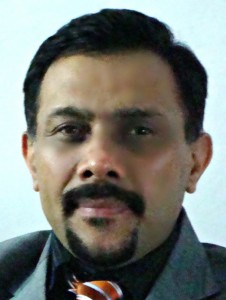Globalization creates wealth for the few and depresses local wages and conditions of employment for the many. Globalization has brought about a shift in power: the nation state has weakened and there is a reduction in social accountability. This makes sovereign states row rather than steer in the process of development, i.e. if countries do not intensely participate in this paradigm set by the North, they are “out”. As a consequence, the poor countries’ very right to development is threatened by this unrelenting liberalization/globalization process. Globalization has put the fate of those many in the hands of large corporations. Although the corporocracy (or corporarchy of Robin Sharp) very well knows the negative effects of Globalization, few of them are committed to change. They tend to ignore the root causes of the social problems they see as patently as everyone else, but seldom address the negative social impacts of their activities. Since they lack the openness and transparency required, they pay only lip service to change and seldom change their practices (or change them in very marginal ways)

By Claudio Schuftan*
People’s Health Movement – PHM
Topical: Past Century Nineties Forward-Looking Essay
Neoliberal Global Restructuring in Health, or the Fable of the Mongoose and the Snake (Fableous Food for Thought)
What is history, but a fable agreed upon?
Peter Hoeg (1)
Globalization and its negative consequences:
- The peculiar current form of Capitalism rechristened as ‘free market economics’ rules in the vast majority of countries as our century draws to a close. This paradigm –at the core of the transnational liberal order– has become the current hegemonic development philosophy as well. It goes by the motto of “trade, not aid”, no matter how uneven the former may be.
- Globalization –the new Capitalism’s flagship– denotes the ability of international capital and transnational corporations to switch investments across the globe. In doing so, Globalization creates wealth for the few and depresses local wages and conditions of employment for the many.
- Globalization has brought about a shift in power: the nation state has weakened and there is a reduction in social accountability.
This makes sovereign states row rather than steer in the process of development, i.e. if countries do not intensely participate in this paradigm set by the North, they are “out”. As a consequence, the poor countries’ very right to development is threatened by this unrelenting liberalization/globalization process. (2) (3)
- Globalization has put the fate of those many in the hands of large corporations. Although the corporocracy (or corporarchy of Robin Sharp) very well knows the negative effects of Globalization, few of them are committed to change. They tend to ignore the root causes of the social problems they see as patently as everyone else, but seldom address the negative social impacts of their activities. Since they lack the openness and transparency required, they pay only lip service to change and seldom change their practices (or change them in very marginal ways). (4)
- Moreover –in the dealings of Globalization-its intricate connections are so patently disguised as to become almost invisible. Or worse, the deceptions are so brilliantly woven into its processes that falling for those deceptions is deemed as both fashionable and progressive. (5) (6)
- In the Globalization context, the privatization called for often ends up meaning denationalization with Globalization further pursuing a removal of trade barriers, (often dependence creating) technology change, and a rise in consumerism. This, on top of being rightly singled out as additionally creating and accelerating poverty, disparities, exclusion, unemployment, alienation, environmental degradation, exploitation, corruption, violence and conflict. (7) (8)
- Not by accident then, has Globalization been called “the imperialism of the 1990’s”. (What is different between imperialism and globalization is just the latter’s speed of expansion).
- Because the Globalization of the economy brings about marginalization on a massive scale and economic and political domination of a magnitude not seen since the days of colonialism, it is turning in to a process of Globalization of poverty and of an intensification of the plunder of the neo-colonies. The effects of Globalization are thus terribly uneven and produce big winners and losers. (9) (6) (2)
- Due to these negative consequences of Globalization, communities in many Third World countries are no longer able to cope –their previously successful coping strategies diminishing daily. The immediate challenge is to bolster the same communities’ coping strategies so they can continue to help themselves under the new set of rapidly changing circumstances. (10)
- Even business executives espousing Globalization are aware of its negative effects. An Asian executives poll carried out by the Far Eastern Economic Review in November of 1997 (p.38) showed 71% of the business leaders polled across the region agreeing that the benefits of Globalization had not been equitably distributed in their respective countries. 48% were of the opinion that Globalization had widened income disparities in their countries. 50% said that it was contributing to social tensions and 60% said their respective governments were not doing enough to help those hurt by Globalization.
- More surprising yet is the IMF’s very own overall view on Globalization. For them, the latter links labor, production and capital markets of economies around the world. They do accept that it leads to sharp ‘short-run’ changes in the distribution of income. They further accept that Globalization is to blame for growing inequalities in developed countries as well. For example, to them, Globalization limits the ability of union workers to bargain, as well as making it more difficult for governments to implement equitable policies. (11)
- Because they are unable to do the latter, governments in the Third World are simply assumed to be incapable of assuming a minimum level of welfare for their citizen. Fitting the ideology, it is then implied that it is necessary to look for alternatives in the private sector or to directly privatize services (and NGOs are occasionally a convenient form of privatization). Only that, often, such privatization strategies lower the quality of services for the poor and end up widening the gap between the rich and poor. The alternative that is being written off a-priori is the need to improve the state’s credibility, accountability and responsiveness to welfare matters.(*)
[(*): After all, the extraordinary and more equitable growth of Vietnam and China contradicts the view that a state control of the economy and the market is inimical to growth].
- One has to acknowledge that most governments have not adopted the right strategies. But let us not develop yet new ones; let us make governments adopt and adapt the right and proven pro-poor strategies providing them with a set of options, and not a single pathway. Sustainable solutions proposed need to be sound and appropriate both in the way things will be done as much as in what to be done. (8) (12)
- At this point, we hardly need to be reminded of the hard facts documenting the negative effects of Globalization. Tid bits of the evidence should suffice to close this quick, maybe caricaturized, review of its negative consequences:
– Under Globalization, the annual losses to developing countries run at an estimated $500 billion –an amount much higher than what they receive in foreign aid.
– As a consequence, developing countries have had a series of years of consecutive negative financial flows; this is equivalent to at least seven years of an economic hemorrhage.
– From 1960-99, there has been a 60% fall in the prices of commodities other than oil! This has resulted in a reduction of two thirds in the buying power of developing countries. (13)
– As a result, the number of hungry people around the world keeps rising every year and poverty is becoming increasingly feminized (70% of all the poor are women). Free trade has been free for business and industry, but not for women and the poor. New technologies have not shown to have intrinsic pro-poor or pro-women positive effects either, although they have such a potential (which unless we help steer in that direction will invariably continue favoring the already wealthy and male). Therefore, any genuinely poverty-redressing policy is bound to be a gender-oriented policy.
A dearth of workable solutions?
- There is no single universal solution in sight that will promote just the benefits of Globalization to all people: giving the same advice to everyone simply has not and will not work; this is what has been called “the fallacy of composition”.
- A balanced and realistic value-free response to Globalization is difficult, especially if one considers the current reality of a unipolar world with a North-centered and North/transnationals-dominated economic order. (14)
- On the one hand, the transnational corporations cannot be allowed to continue to duck and dive, invest in smoke screens, espouse gradualist solutions and attempt to derive maximum publicity from piecemeal changes. They must be persuaded, cajoled or even forced to change.
On the other hand , new insights are emerging as to the appropriate mix of market and government activities needed to complement each other. (4)
- Whatever the response, promoting the economic benefits of Globalization requires mechanisms to prevent its excesses, because there is a clear trade-off between market efficiency and the social welfare of workers and peasants.
- Turning again to the IMF, they see the policy responses to counter Globalization to include a mix of two elements:
- a) ‘safety net interventions’ such as targeted subsidies, cash compensations, severance payments to and retraining of sacked employees, wage subsidies, and public works programs, and
- b) ‘fiscal policies’ (the most direct tool of redistribution) such as levying highly progressive taxes, distribution of shares in privatized enterprises, and increased government spending in health and education (i.e. reallocation of spending to the social sector), as well as higher minimum wages, good unemployment benefits, job protection, keeping inflation low, subsidizing lower quality commodities, and giving better access to credit, justice and public services. (11)
How this is to be achieved, and whether the IMF plans to go for broke for these changes remains unsaid in the source here cited.
- The truth is that, in the real world, the more radical visions or sustainable solutions calling for deeper social and environmental change have been diluted or silenced further with the onslaught of Globalization. In a mix of insensibility and unresponsive, the prevalent attitude has been to selectively reject (depending on the bias) the main features of any criticism and to keep important issues from surfacing to critical consciousness. This is what has been called “the exclusion fallacy” (“…if we have not considered it, it is not important…”).
- In the international scene of (mercenary) technical development assistance, for example, issues of substance are turned into technical matters by paid consultants while underlying more structural issues get obfuscated. Or, what amounts to the same, aid agencies too often remain unwilling to respond politically to political situations. (3)
The Equity/Equality approach:
- Equal relations between unequals reinforces inequality!(3)
- To illustrate this, think for a while that equity under Globalization is a bit like the fight of the Mongoose and the Snake:
Both are of about the same strength, but invariably the mongoose wins –it is more resourceful and it organizes its strategy better to strike.
The First World is like the mongoose; the Third World is like the snake.
The lesson of this fable is that an asymmetry in the use of market power aggravates inequality. The affluent always end up having more political clout (and more wealth). Therefore, promoting self-interest (the soul of the market) is simply not enough. We have to put some heart into it; add solidarity to self-interest. (15) (16) [A modicum of anti-greed policing actions may help as well…].
- To achieve greater equity, a set of “equity modifiers” have been proposed. These include: targeting interventions (geographically and/or to vulnerable groups or individuals), land reform, educational/water and sanitation/health/nutrition and family planning interventions, employment generation, grassroots participation in setting priorities, development of the non-farm rural economy, aid to rural women, and the levying of taxes on polluters and degraders. (2)
- As pertains to gender, the latter has reached a unique status in the transnational liberal order. Gender equality is (finally) considered compatible with the basic tenets of the neo-liberal credo. But economic equality, not. (17)
- Remedies proposed to specifically increase equity and access to basic services thus include financial and non-financial approaches. To recap and add, among the former are the targeting of subsidies (i.e. selective subsidies of goods and services disproportionately consumed by the poor), prepayment plans (e.g. community-based health insurance), exemptions and the selective dropping of some fees (e.g. health and educational). Among the latter are a greater emphasis on decentralization, on the use of social marketing (*), on prevention and on improvements of the quality of care (in health), as well as on a fairer urban/rural distribution of resources.
[(*):Social marketing –one of the sweetheart companions of Globalization attempting to give it a human face– focuses on high-powered “Madison Ave-type” messages and communication strategies that pursue behavior modification and not informed choices. It is quite obvious that we should rather be trying to better understand what motivates people to change and why, and then letting them decide by themselves what steps to take to get there].
- Surprising as it may seem, the IMF thinks that more equity need not hamper growth, it could indeed reinforce it! (sic) They actually see a strong negative link between high unequal distribution of assets and subsequent rates of growth. They see equity only requiring ‘equality of opportunities’, though, not necessarily ‘equality of outcomes’. In that sense, they agree the poor need to increase their human capital. Equity, to them, is critical for the political viability of Globalization… (sic). Therefore, decentralization and changing the composition of public expenditure is for them a must. For instance, expenditures on health have to increase, they say, but to be equitable, they have to be concentrated on preventive activities in rural areas and should be targeted to the lower income quintile (*). (11)
[(*): Beware that valid arguments have been raised against ‘targetry’: Targeting misrepresents complex realities, involves big cost in monitoring, distorts policy and destroys political momentum for structural changes. (18) (19)
- Regardless of whether the IMF follows up with concrete actions on what they philosophize, we need not apologize to act with a more resolute equity bias beyond lip service since such a bias is an important corrective to the other more dominant inequitable value biases out there in the heartless market place. (One of them, for sure, is basing decisions on interventions on cost-benefit analyses only; cost-benefit analyses are understandable to economists and policy makers, but they are grounded in a different reality than most of us live in. Economists make decisions guided by what is ultimately measurable if convertible into monetary value only). (20)
- Is this more resolute equity bias a radical proposition? Yes. Is it necessary? Absolutely. Is it impossible? Possible. Is it likely? Not very likely based on my latest dispassionate reality check. But what, then, are the alternatives and could they do the job on time? (5)
The Human Rights approach:
- A human rights framework is the emerging UN response to foster development in the new millennium.
- Globalization may be inevitable, but what it looks like is not –there are forces that can shape it, and human rights must be one of those forces. (21)
- As someone said, human rights can set limits to the sways of the market. (22)
- To restate the dogma of Human Rights, they are indivisible; they do not apply some yes and some no, some today and some tomorrow, some to us and some to them, some to the rich and some to the poor, some to women and some to men. These obligations are universal for their implementation. We are therefore compelled to operationalize civil, political, economic, social and cultural rights in our daily work..
- We have to be on the lookout, though. There is still much righteousness and hypocrisy in this field. One can easily lose faith in those who preach human rights and have little to offer.
Actually, with Globalization, “Might is Right” has come back with a vengeance. And in a defeatist stance, we have so far accepted this fact and have bowed to the forces we think we cannot effectively oppose. (23)
- To make the human rights approach concrete and giving it substance is a political task. Their enforcement and holding governments accountable for their human rights record can only be achieved through political action. Soft approaches will not do. (24)
- Steps in the right direction, at this time, will be the establishment of National Human Rights Committees and the setting of concrete examples of rights-based programming. But bolder steps will have to follow.
- Furthermore, we have to fight the indifference of our youth to the present human rights situation. Our young and upcoming colleagues also remain largely indifferent to the overwhelming negative effects Globalization is having in the world. [It is during our youth –when we have faith in and fight for the ultimate answers– that we have to interest the upcoming generation in Globalization. Later, we cave-in and accept that we are always going to have to live with the big questions leaving the responses to undefined others]. We have thus to enroll the youth before they resign themselves to the fact that all they can do is pose the same unanswerable questions over and over again (even if in new ways), without sticking their own necks out to seek the right answers. (1)
- Our youth seems more interested in the information superhighway. As if Marshall Mc Luhan’s predictions were right, in terms of action orientation, the Internet has so far been more part of the problem than of the solution. There is a valid growing lament that wisdom, imagination and virtue are lost when messages double, information halves, knowledge quarters, and often deceiving noise without origin, quality and purpose is everywhere. We have to overcome this downward spiral by using the same medium to give more appropriate direction and guidance on options to counter Globalization and more aggressively foster human rights.
- Our endeavors to achieve the latter two in the new millennium will only succeed if and when the youth becomes more central in the process of intellectual rejuvenation (a role they are now not taking up), and women (whose gender roles are being explicitly suppressed) also move more to center stage. [We need to invert the M of Men to a W of Women beyond mere rhetoric…] (25)
- In sum, an effective challenge against Globalization and its negative effects on human rights is possible, but demands the same kind of intellectual commitment and vigor that characterized anti-colonial or independence fights.
- Questions of the relevance, accountability and utility of the social sciences in this process need to be explored. Are they confronting the real problems? Are the problems of Globalization and the violation of human rights being made focal points of the social sciences’ analyses and actions? Western intellectuals have simply abandoned their commitment to challenge the exploitation and oppression of the poor as they continue being brought about by Globalization. Concerted campaigns and struggles against poverty, tyranny any exploitation will form the only sustainable basis of an intellectual renaissance of our youth and of ourselves.
Bolder steps are needed:
- When we talk about Sustainable Development, we’re talking about what we should try to become today and in the future and what that compels us to do now.
- Taking a minimalist stand towards Globalization will do no harm, but neither will it do much good. Inertia in history (has) and will always work(ed) against the more visionary and radical changes deemed necessary when the same fall outside the ruling paradigm. (1)
- Development cooperation must thus become more political, because only structural reforms will deliver sustainable development.
In many an aid recipient country, conventional politics simply is increasingly losing its primacy over commerce and industry. [All too frequently we see the failure of elections as an instrument of political renewal… As somebody said, the problem with political jokes is they get elected. (26)]. Therefore, new, bolder approaches are needed. Solutions must be geared to control that which fuels the problem at its roots.
- The solutions to the consequences of Globalization on the health and nutrition sector, for example, cannot be medicalized any longer. Technical assistance focused on health/nutrition matters only is not enough to uproot the structural inequities underlying pervasive and unrelenting ill-health and malnutrition in the world.
- But the inertia is so great and our collective virtual view of reality so distorted and entrenched, in part due to Globalization, that the likelihood of us changing that reality remains dim. Neither greater individual responsibility nor containment strategies will do. A solution will somehow have to be imposed on us by some powerful or strategic force, either by fate or by design and it better be soon.
- In short, we need to give a larger intellectual and political scope to our discussions on Globalization. In doing so, we have to manage to develop a political program of more universal appeal. We need to set up the framework that will connect all the different social actors to come up with a focused common agenda.
- More than ever before, we need an overt political intervention, simply because economic violence is best counteracted by political antibodies, and what the people’s movements around the world want is simply “More”, from life, from history and from us.
- When economics has ceased to strengthen social bonds and its prescriptions are actually further pauperizing millions, it is time to start thinking in political terms again. This is one of my cherished iron laws. (27)
Three caveats:
1) As hinted above, intellectual and cultural imperialism now penetrates our minds by remote control via satellite links and the information superhighway and poses great danger to the production and development of local knowledge. But this is not a fatalistic statement. While not denying that the giant tentacles of Globalization reach into every corner of the world, this should not be equated with omnipotence.
2) Stereotyping the object of criticism (Globalization) risks to emotionalize the issue rather than objectively analyzing and diagnosing it. We have to give up our quick prescriptive impulses (saying what should have been done) and become more empirico-analytical (describing and dialectically interpreting what is actually happening). (25)
3) One can set morally desirable goals so high or set goals without following them with sincere, workable policies that they remain out of all realistic reach and lose all power to determine the direction of action. Even rules can be set or imposed more as a source of comfort than of good choice. (28)
In closing:
- As you finish reading this, make no mistake, these seemingly abstract issues about which we write papers are matters determining the lives of millions of people. We all know that, as Benjamin’s law says, when all is said and done, a lot more is said than done. It is therefore not enough to bring these issues under the spotlight; as someone else said, we need to make more light! (29) (30)
- The facts discussed here are more than enough to allow us to go negotiate (or struggle) for new more radical equitable/pro-poor/pro-women/human rights based strategies on the highest of moral grounds. (3)
- We need to awaken the ‘investigative reporter’ in us to constantly go after the human story behind the statistic. After all, journalism is the rough draft of history –and we want to be counted in shaping it. Those whose interests we claim to serve also expect it from us.
References:
(1) P. Hoeg, ‘An experiment in the constancy of love’, in Tales of the Night, Panther Books, Haverhill Press, London 1998, pp.120-121.
(2) P. Hazel, IFPRI.
(3) Y. Tandon, ‘WTO: What strategies for the South?’, South Letter, 3:34, 1999, pp.14-16.
(4) R. Welford, UNRISD News, No.17, Autumn/Winter, 1997, p.7.
(5) C. Thomas, ‘You can’t skate into a buffalo herd’, WorldWatch, 12:4, Jul/Aug 1999, p.5.
(6) C.R. Bijoy, ‘Mismanaging health’, LINK (ACHAN), 13:2, Sept. 1995, pp.15-17.
(7) K. Bezanson, IDS, Univ. of Sussex.
(8) U. Jonsson, UNICEF, in SCN News, No.18, July 1999, p.81.
(9) S. Ramphal.
(10) J. Tagwireyi, MOH, Zimbabwe.
(11) Finance and Development, 35:3, Sept.1998, pp.2-5.
(12) E.A. Graffy.
(13) Human Development Report 1997, UNDP.
(14) LINK (ACHAN), 13:4, March 1996.
(15) A. Anderson.
(16) R. Ricupero, UNCTAD.
(17) J. Baudot, UNRISD News, No.20, Spring/Summer, 1999, pp-1-3.
(18) S. Maxwell, IDS, Univ. of Sussex.
(19) More on this forthcoming in C. Schuftan, and G. Dahlgren, ‘Can significantly greater equity be achieved through targeting?’ manuscript in preparation.
(20) P. van Esterik.
(21) L. Haddad, IFPRI, in SCN News, op.cit., pp.12-14.
(22) R. Jolly, SCN News, op.cit., p.11.
(23) President Mahatir Mohamad, Kuala Lumpur, 9/2/98.
(24) B. Ramcharan, UN High Commission for Human Rights, in SCN News, op.cit., p.16.
(25) N. Nieftagodien, ‘Globalization and social sciences in Africa’, CODESRIA Bulletin, Nos.1+2, 1999, pp.56-60.
(26) Henry Cate VII.
(27) D. Cohen.
(28) F. Nuscheler, D+C, March 1998, p.5.
(29) H.F. Johnson, Minister of International Development and Human Rights, Norway.
(30) W. Clay, FAO.
—————————————————
*Claudio Schuftan, M.D. (pediatrics and international health) was born in Chile and is currently based in Ho Chi Minh City, Vietnam where he works as a freelance consultant in public health and nutrition.
He is an Adjunct Associate Professor in the Department of International Health, Tulane School of Public Health, New Orleans, LA. He received his medical degree from the Universidad de Chile, Santiago, in 1970 and completed his residency in Pediatrics and Nutrition in the Faculty of Medicine at the same university in 1973. He also studied nutrition and nutrition planning at the Massachusetts Institute of Technology (MIT) in Cambridge, MA in 1975. Dr. Schuftan is the author of 2 books, several book chapters and over fifty five scholarly papers published in refereed journals plus over three hundred other assorted publications such as numerous training materials and manuals developed for PHC, food/nutrition activities and human rights in different countries . Since 1976, Dr. Schuftan has carried out over one hundred consulting assignments 50 countries in Africa, Asia, Latin America and the Caribbean. He has worked for UNICEF, WFP, the EU, the ADB, the UNU, , WHO, IFAD, Sida, FINNIDA, the Peace Corps, FAO, CIDA, the WCC (Geneva) and several international NGOs. His positions have included serving as Long Term Adviser to the PHC Unit of the Ministry of Health (MOH) in Hanoi, Vietnam under a Sida Project (1995-97); Senior Adviser to the Dept. of Planning, MOH, Nairobi from 1988-93; and Resident Consultant in Food and Nutrition to the Ministry of Economic Affairs and Planning, Yaounde, Cameroon (1981). He is fluent in five major languages. He is currently an active member (cschuftan@phmovement.org) of he Steering Group of the People’s Health Movement and coordinated PHM’s global right to health campaign for 5 years.






